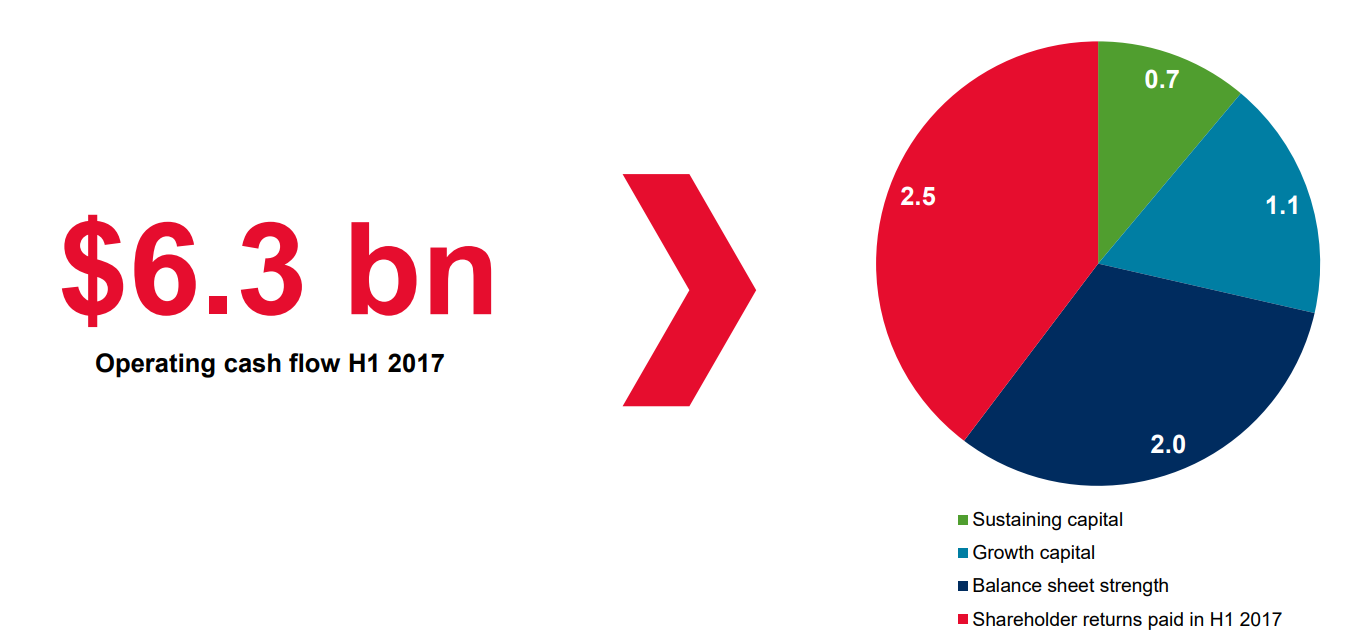The Airline Industry's Struggle With Oil Supply Shocks: Challenges And Solutions

Table of Contents
The Economic Impact of Oil Supply Shocks on Airlines
Oil supply shocks inflict considerable economic hardship on airlines, primarily due to the substantial role fuel plays in their operations.
Fuel Costs as a Major Expense
Fuel represents a significant portion of an airline's operating costs, often exceeding 20%. This makes airlines exceptionally sensitive to price spikes. A sudden increase in oil prices directly translates to higher operational expenses, squeezing profit margins and potentially leading to losses.
- Statistics: In 2022, fuel costs accounted for an average of 25% of total operating costs for major US airlines. This percentage can be even higher for smaller airlines with less bargaining power.
- Impact on Profitability: A 10% increase in jet fuel prices can reduce airline profitability by 5-15%, depending on factors like hedging strategies and route efficiency.
- Examples: The 2008 oil price spike significantly impacted many airlines, forcing some into bankruptcy or government bailouts. Recent geopolitical events have highlighted the industry's continued vulnerability.
Cascading Effects on Ticket Prices and Demand
Increased fuel costs inevitably lead to higher ticket prices. This price increase can reduce demand, especially for price-sensitive travelers. The impact varies depending on the elasticity of demand for air travel.
- Price Elasticity of Demand: While air travel is considered a relatively inelastic good, meaning demand doesn't change drastically with price changes, significant price increases can still deter travelers, particularly leisure travelers.
- Decreased Business Travel: Business travelers, often less price-sensitive, might reduce travel frequency or opt for alternative modes of transport.
- Impact on Airline Types: Budget airlines, with their leaner margins, are particularly vulnerable to fuel price increases, while full-service carriers with higher ticket prices might be able to absorb the cost better, at least temporarily.
Impact on Airline Investments and Expansion Plans
Oil price volatility significantly impacts an airline's capacity for investment and expansion. Uncertainty makes it harder to secure loans and plan for long-term growth.
- Difficulty Securing Loans: Lenders are hesitant to provide loans when fuel costs are unpredictable, increasing the risk for airlines.
- Postponed Fleet Modernization: Airlines might delay purchasing new, fuel-efficient aircraft due to the high initial investment costs.
- Route Cancellations: New route launches might be canceled or delayed due to uncertainty about future fuel costs and passenger demand.
Strategies for Mitigating the Impact of Oil Supply Shocks
Airlines employ various strategies to mitigate the impact of oil supply shocks and improve their resilience to fuel price volatility.
Fuel Hedging Strategies
Hedging involves using financial instruments to protect against price fluctuations. Airlines often use various strategies to minimize risk.
- Futures Contracts: Agreements to buy fuel at a predetermined price at a future date.
- Options Contracts: Provide the right, but not the obligation, to buy fuel at a specific price.
- Swaps: Exchange fixed-rate payments for variable-rate payments linked to fuel prices.
- Risks and Benefits: While hedging reduces risk, it also limits potential gains if oil prices fall. Effective hedging requires expertise and careful risk management.
Operational Efficiency and Fuel Conservation
Reducing fuel consumption directly translates to cost savings. Airlines implement several strategies to optimize their fuel efficiency.
- Modernizing Fleets: Investing in fuel-efficient aircraft significantly reduces fuel consumption per passenger mile.
- Optimizing Flight Routes: Utilizing advanced flight planning software to find the most fuel-efficient routes.
- Weight Reduction Programs: Minimizing the weight of aircraft through efficient cargo loading and eliminating unnecessary weight.
- Crew Training: Training pilots in fuel-efficient piloting techniques contributes to substantial savings.
Diversification of Fuel Sources and Alternative Fuels
Exploring alternative fuels and diversifying fuel sources is crucial for long-term sustainability.
- Biofuels and Sustainable Aviation Fuels (SAFs): Research and development of biofuels and SAFs offer a pathway towards reducing reliance on traditional jet fuel.
- Challenges: Widespread adoption faces challenges related to cost, availability, and infrastructure development.
- Government Incentives: Government policies and incentives can accelerate the adoption of alternative fuels.
Strategic Partnerships and Alliances
Collaborating with other airlines can help share resources and mitigate risks associated with fuel price volatility.
- Fuel Purchasing Agreements: Joint purchasing agreements can leverage economies of scale and secure better fuel prices.
- Shared Resources: Sharing resources like maintenance facilities and training programs reduces costs.
- Risk-Sharing Mechanisms: Collaborations allow for sharing risks associated with fuel price volatility.
Government Policies and Regulations Regarding Oil Supply and the Airline Industry
Government intervention plays a vital role in mitigating the impact of oil supply shocks on the airline industry.
Government Intervention and Subsidies
Governments can provide support to airlines during periods of high fuel prices.
- Tax Breaks: Reducing taxes on aviation fuel can lessen the burden on airlines.
- Subsidies: Direct financial assistance can help airlines navigate challenging periods.
- Effectiveness and Drawbacks: The effectiveness of these measures varies depending on the specific context and can lead to market distortions.
Regulations on Fuel Efficiency and Emissions
Government regulations incentivize the adoption of fuel-efficient technologies.
- Emissions Trading Schemes: Cap-and-trade systems can encourage airlines to reduce emissions.
- Fuel Efficiency Standards: Regulations mandating minimum fuel efficiency levels can drive innovation.
- Impact on Innovation: Stringent regulations can stimulate research and development of new technologies.
Conclusion
Oil supply shocks pose a significant and ongoing challenge to the airline industry. Mitigating their impact requires a multi-pronged approach encompassing fuel hedging strategies, operational efficiencies, diversification of fuel sources, strategic partnerships, and supportive government policies. By proactively addressing these challenges, airlines can enhance their resilience and navigate the uncertainties of the global energy market. Investing in research and development of sustainable aviation fuels is crucial for long-term sustainability and resilience against future oil supply shocks and price volatility in the airline industry. Understanding and proactively managing the risks associated with oil supply shocks is essential for the future of the airline industry.

Featured Posts
-
 Rio Tinto Retains Dual Listing Structure After Investor Challenge
May 03, 2025
Rio Tinto Retains Dual Listing Structure After Investor Challenge
May 03, 2025 -
 Nigel Farages Reform Uk Faces Rift Ex Deputy Hints At New Party
May 03, 2025
Nigel Farages Reform Uk Faces Rift Ex Deputy Hints At New Party
May 03, 2025 -
 Who Wants To Party At Melissa Gorgas Exclusive Beach House
May 03, 2025
Who Wants To Party At Melissa Gorgas Exclusive Beach House
May 03, 2025 -
 Farages Bold Claim Reform Uk Wants Snp To Win In Scotland
May 03, 2025
Farages Bold Claim Reform Uk Wants Snp To Win In Scotland
May 03, 2025 -
 Cnn Experts Explain The Challenges Of Combating Misinformation
May 03, 2025
Cnn Experts Explain The Challenges Of Combating Misinformation
May 03, 2025
